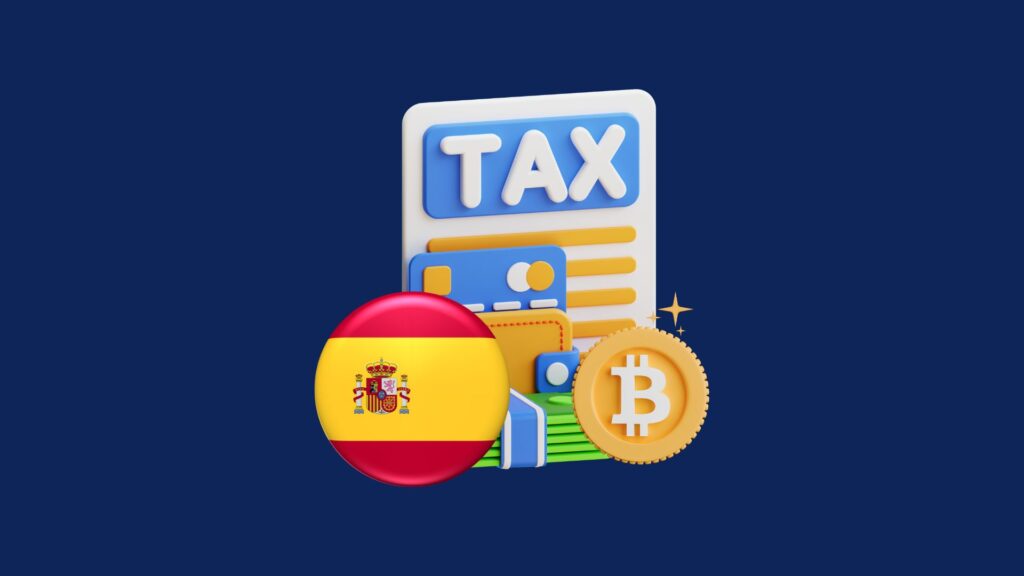
Spain taxes crypto, but the amount you pay depends on what you did with it (traded, staked, or received an airdrop) and sometimes where you keep it. Here is a useful overview for people who live in Spain and need to file their IRPF (personal income tax) in 2025. This isn’t legal advice; it’s just a clear map of the rules and where they came from.
Too long; didn’t read
- If you trade (sell or swap), you have to pay taxes on your capital gains and losses in the savings base. The rates for 2025 are 19%, 21%, 23%, 27%, and 30%. The new 30% band only applies to gains over €300,000.
Summaries of Taxes - Staking yields are usually considered investment income (movable capital) and are taxed at the same progressive rates in the savings base.
Uria +1 - Airdrops are usually reported as general-base income (not savings base) and are taxed at your general rates, which can be as high as 47%. Spanish professionals suggest this cautious approach when in doubt.
cryptobooks.tax +2 · Bit2Me Help - Basic information for admins: the tax year runs from January 1 to December 31, and the usual filing deadline is June 30 of the next year. You file using Modelo 100. Modelo 721 reporting may apply if you have more than €50,000 in foreign wallets or exchanges at the end of the year.
Kraken +2 · Koinly +2
1) Trading: selling and swapping crypto for crypto
Spain taxes every sale, whether it’s selling for euros or swapping one cryptocurrency for another (BTC→ETH). You figure out how much you made or lost on each trade by subtracting the cost basis from the proceeds. The IRPF manual from the Spanish Tax Agency clearly says that these gains are «capital gains and losses» from virtual currencies.
Agencia Tributaria
A lot of people are surprised to learn that crypto-to-crypto exchanges are taxable. This is because the IRS treats you as if you sold the first asset to buy the second. A number of practitioner guides stress this point for Spain.
Benavides Associates
Method and brackets (2025): The savings base rates in Spain in 2025 are 19% for amounts up to €6,000, 21% for amounts between €6,000 and €50,000, 23% for amounts between €50,000 and €200,000, 27% for amounts between €200,000 and €300,000, and 30% for amounts over €300,000. The new top 30% band in 2025 was 28%.
Tax Summaries +1
FIFO and records: The Spanish financial press and tax resources often mention FIFO is used to figure out which units you sold first, so keep detailed records of your trades.
Five Days
Losses: According to general IRPF rules, realized crypto losses can offset crypto gains and, within limits, other income from savings.
2) Staking: how Spain handles yield
Spain’s legal and tax commentary, as well as DGT-related doctrine, call staking rewards «rendimientos del capital mobiliario,» which means «investment income from letting others use your capital.» You get these rewards in kind at market value when you buy the coins. These are part of your savings base and are taxed at the same progressive rates of 19% to 30%. Later, when you sell those rewarded tokens, you’ll have a capital gain or loss based on the difference between the accrual value and the sale price.
Uria +1
Example in real life:
- You get 0.5 ETH on May 1 by staking. The market value is €1,200, which is investment income in the savings base for 2025.
- You sell that 0.5 ETH on September 1 for €1,350, which is a €150 capital gain (savings base).
This «two-step» treatment (income when you get it, then capital gain/loss when you sell it) is common in Spain’s comments on staking and interest-like crypto yields.
Dr. Frühbeck Abogados
3) Airdrops: different rates for each bucket
Airdrops don’t fit neatly into the category of «investment income.» In Spain, tax professionals usually see airdrops as general-base taxable income (often as capital gains that don’t come from a transfer). They are taxed at your general IRPF scale, which can be as high as 30% to 47%, depending on where you live and how much you make. Without a single, binding AEAT definition for all types of airdrops, many resources that focus on Spain suggest this cautious approach.
cryptobooks.tax +2 · Bit2Me Help
- When you get the airdrop, add its market value to your general base as income.
- At sale, any gain or loss after that value is a capital gain or loss (savings base).
4) How to file and the forms you’ll need
Modelo 100 (IRPF) is the main annual return. Most people file it online through Renta Web by June 30 of each year for the previous tax year. Exchanges’ guides say the same thing about this timeline.
Kraken
Modelo 721 is an informative return (no tax due) for crypto held abroad if balances abroad are greater than €50,000 at the end of the year. It was first used in 2024 campaigns and is now required for 2025 filings.
Grupo2000—Training for Change
Modelos 172/173: service providers and exchanges send informational returns to AEAT (you don’t have to file these, but they make data easier to see).
cryptobooks.tax
Wealth/Solidarity taxes: People with a lot of money may have to pay the Wealth Tax (regional) and the temporary Solidarity Tax on Large Fortunes, which will last until 2025. Crypto counts as part of net wealth.
Blevins Franks

5) Worked on mini-scenarios
A) A trader changes BTC to ETH, and then to EUR
- When you swap BTC for ETH, figure out how much you made or lost compared to the cost of BTC. The tax is based on your savings (19–30%).
- Later, when you sell ETH for EUR, you’ll make or lose money compared to your ETH basis (the value at the swap).
The Tax Agency
B) Staker gets tokens every month
- Every month, you get an investment income equal to the market value of your savings base rates.
- When you sell rewards, you make or lose money based on the value you got when you got them.
Uria +1
C) Send out a new token via airdrop
- Day 1: Add the market value to the general-base income (this is a safe way to do it).
- Day 60: sell tokens and figure out how much you made or lost compared to the original value (savings base).
cryptobooks.tax +1
6) Useful tips for following the rules in Spain
- Keep detailed records, such as the date and time, the asset, the amount, the EUR value, the fees, and the tx hash. The AEAT wants detailed information about how each virtual currency works.
Agencia Tributaria - Use explorers and CSVs from exchanges, and then use a tracker to check your work.
- Be careful with the bands: starting in 2025, the top savings band will be 30%, not 28%. This is important for big gains.
Summaries of Taxes - Don’t forget about foreign holdings: Modelo 721 can still apply if you had more than €50,000 outside of the country on December 31, even if you didn’t trade.
Grupo2000: Training for Change - Plan disposals: knowing that losses can cancel out gains; Spain lets this happen with the savings base under IRPF rules.
- In Spain, the general-base brackets change from one autonomous community to another. Check your region for airdrop (general-base) effects.
- Check your wealth/solidarity: large crypto balances may lead to wealth-type taxes, but the limits vary by region.
Blevins Frank
7) Rates at a glance (2025)
Base for savings (for trading gains and staking returns):
- 19%: as much as €6,000
- 21%: €6,000 to €50,000
- 23%: €50,000 to €200,000
- 27%: €200,000 to €300,000
- 30%: More than €300,000 (new top tier in 2025)
Tax Overviews
General base (often used for airdrops): progressive; top marginal rates can get as high as ~47% depending on where you live and how much you make.
Kraken
In the end
Trading and staking usually make up 19% to 30% of Spain’s savings base today, depending on the bracket. Airdrops are often reported in the general base, which has higher potential rates. Keep careful records, check the new 30% top savings rate, and if you have a lot of crypto outside the US at the end of the year, don’t forget about Modelo 721. You’ll be able to file with confidence if you check those boxes and have a good tracker.